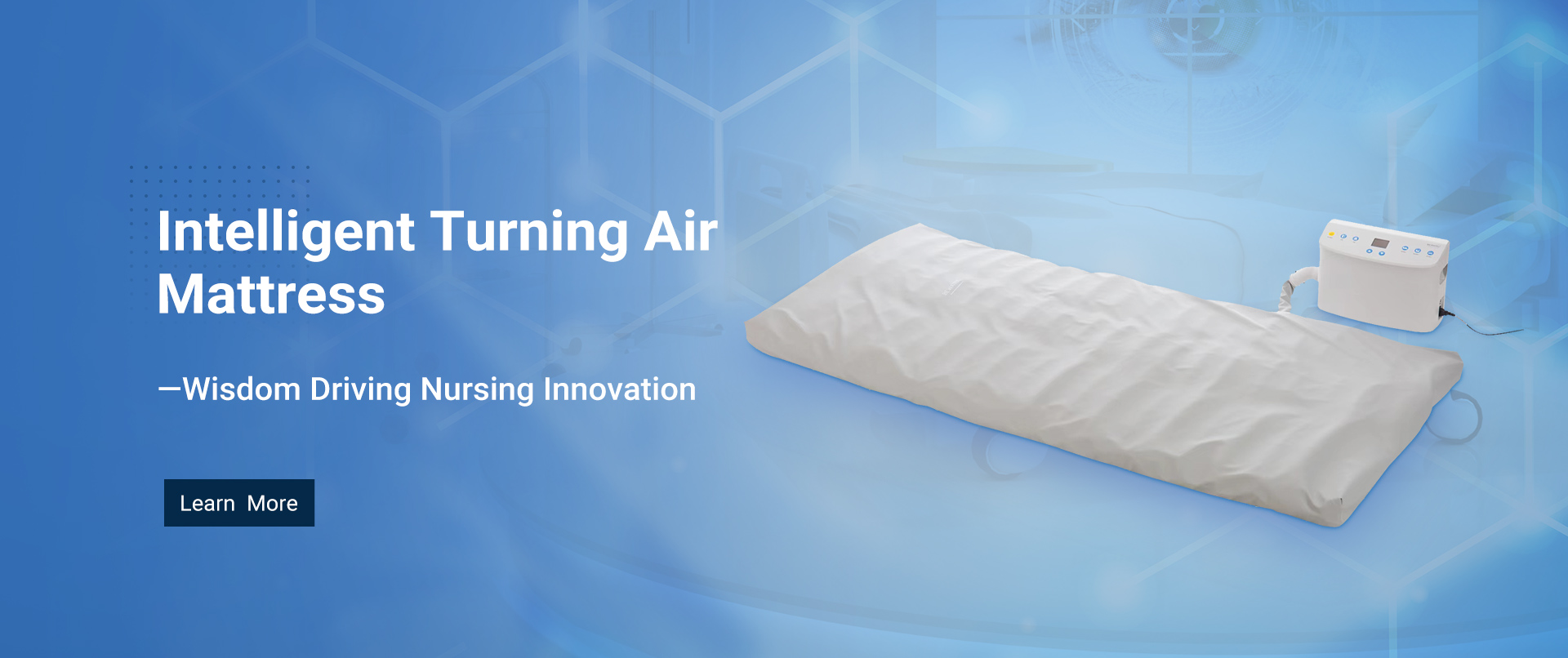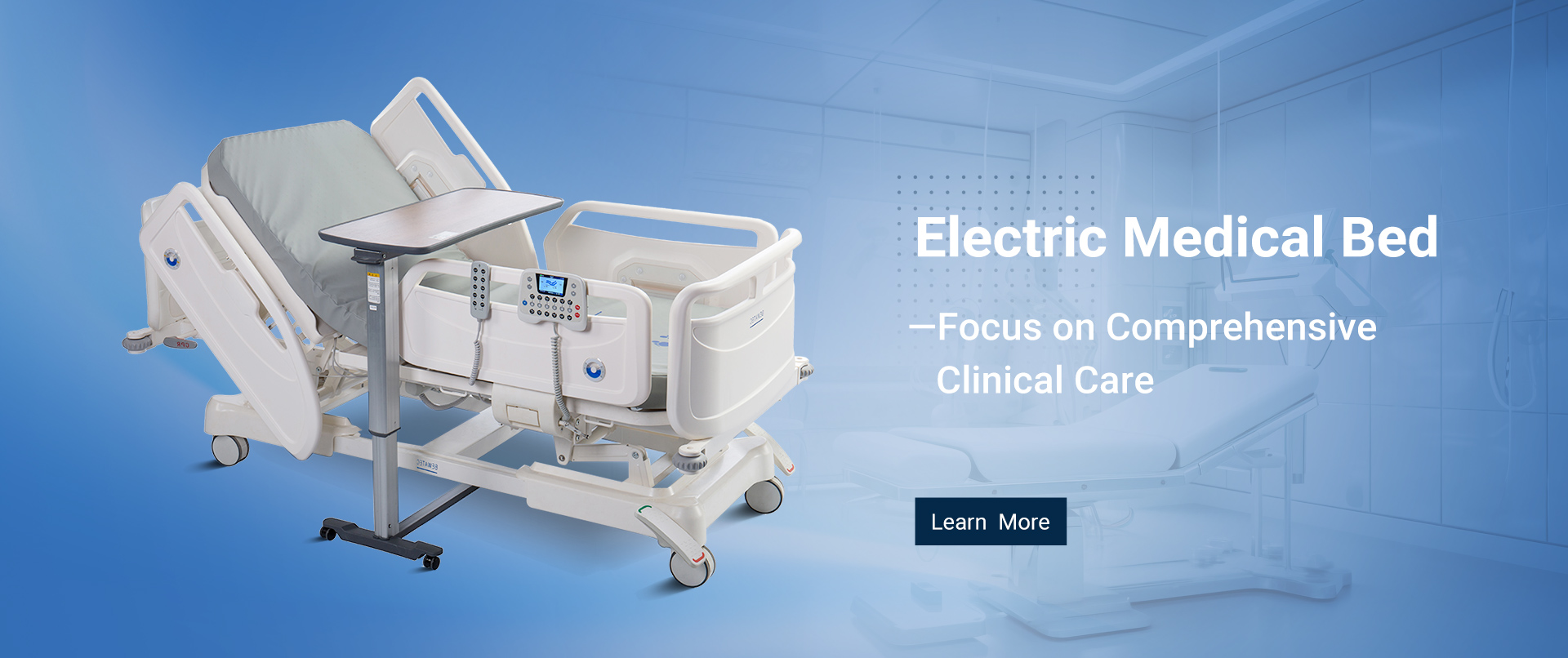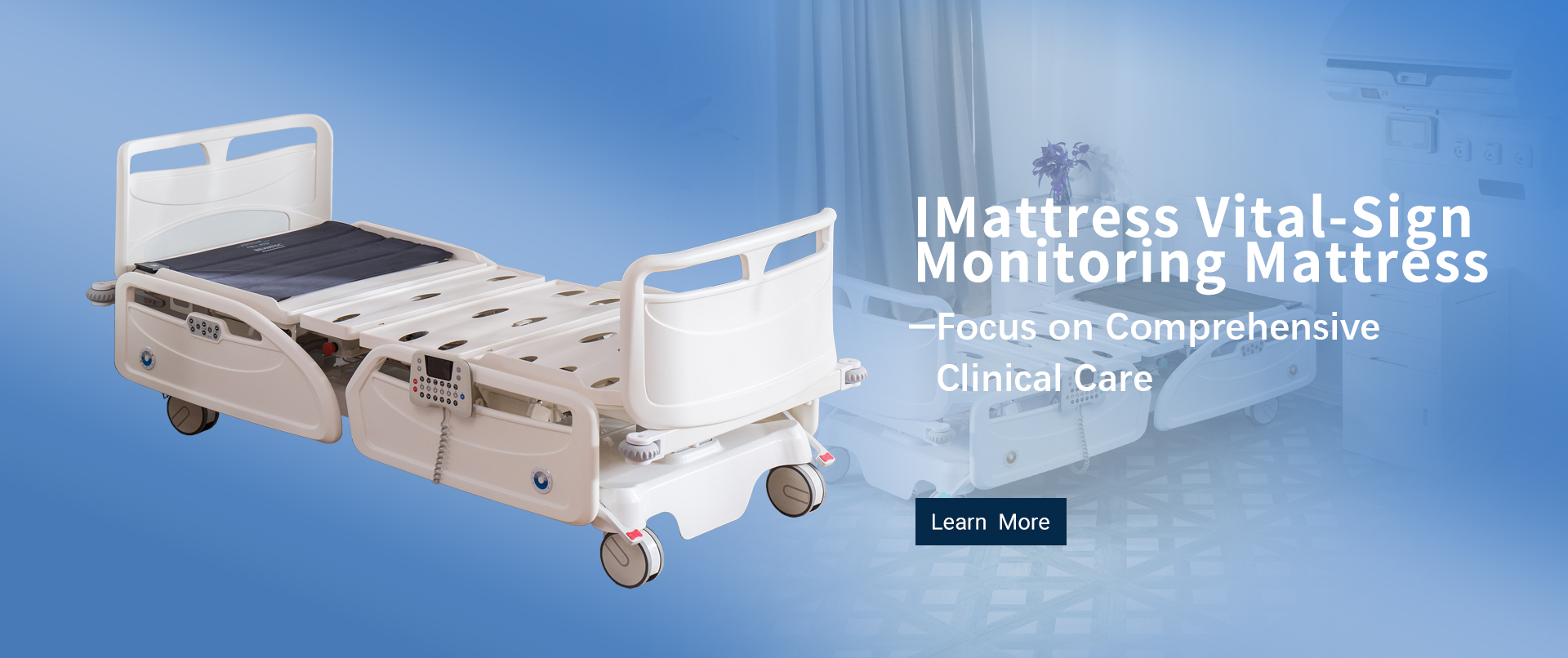
15 Amazing Bedding Solutions For Hospital Beds You Need to Consider
Table of Contents
- Essential Features of Bedding Solutions for Hospital Beds: Enhancing Patient Comfort
- Regulatory Standards for Hospital Bed Linens: Navigating Import and Export Certifications
- Innovative Materials in Hospital Bedding: Meeting Health and Safety Requirements
- Case Studies: Successful Implementation of Specialized Bedding in Healthcare Facilities
- Comparative Analysis: Traditional vs. Advanced Hospital Bedding Solutions
- Best Practices for Maintaining Hygiene in Hospital Bed Linen Management
- Enhancing Patient Comfort: Insights from Recent Studies on the Impact of Functional Bedside Tables in Hospitals
- FAQS
- Related Posts
You know, in the world of healthcare, things are always changing, and it’s really crucial that we make sure patients feel comfortable and safe. A recent report from the World Health Organization really drives this home, showing that when the environment is just right—like with good bedding—patient satisfaction goes up a lot! So, when we talk about 'Bedding For A Hospital Bed', it’s not just a detail; it’s actually a key part of modern medical care. Bewatec (Zhejiang) Medical Device Co., Ltd. totally gets this. They’re all about smart solutions that make the patient experience way better. Their commitment to transforming healthcare digitally is pretty impressive, right? They want to provide journeys that are not just comfortable and safe, but also tailored to individual needs. As we dive into 15 incredible bedding options specifically designed for hospital beds, keep an eye out for how these innovations can really boost patient satisfaction and outcomes. It really aligns with Bewatec’s mission to lead the way in specialized smart medical care solutions globally.

Essential Features of Bedding Solutions for Hospital Beds: Enhancing Patient Comfort
You know, when we're talking about making patients more comfortable in hospital beds, the kind of bedding we choose is super important. A report from the Healthcare Cost and Utilization Project (HCUP) in 2021 highlighted that folks are spending more and more time in hospital beds these days because recovery periods are getting longer. That really drives home why having quality bedding is a big deal. Key features to look out for include things like pressure redistribution, moisture management, and materials that are easy to clean. These aspects are vital because they help lower the risk of pressure ulcers, which sadly affects around 2.5 million patients in the U.S. every year.
And let’s not forget about design! The bedding should be comfy for patients, but it also needs to make life easier for the staff. A study in the Journal of Nursing Administration found that when we improve bedding solutions, it not only boosts patient satisfaction but also helps nursing staff work more efficiently. Fabrics that can help regulate temperature and are hypoallergenic can really make a difference, aiding patients in getting that much-needed restful sleep, which is so crucial for recovery. In a healthcare setting where both comfort and hygiene matter a lot, investing in top-notch bedding isn’t just a nice-to-have anymore—it’s a must!
15 Amazing Bedding Solutions For Hospital Beds You Need to Consider
| Feature | Description | Benefits |
|---|---|---|
| Pressure Relief Mattress | Designed to distribute weight evenly and reduce pressure on the skin. | Helps prevent bedsores and promotes patient comfort. |
| Adjustable Bed Sheets | Fitted sheets that can accommodate various bed heights and positions. | Ensures a snug fit, preventing slippage and enhancing comfort. |
| Incontinence Pads | Waterproof pads to protect bedding from moisture. | Maintains hygiene and comfort for patients with incontinence. |
| Thermal Blankets | Blankets designed to provide warmth and regulate body temperature. | Enhances patient comfort, especially in colder environments. |
| Anti-Microbial Pillowcases | Pillowcases treated to resist bacteria and other pathogens. | Improves hygiene and reduces the risk of infection. |
| Memory Foam Pillows | Pillows that conform to the shape of the head and neck. | Provides optimal support and comfort for restful sleep. |
| Waterproof Mattress Protectors | Protectors that shield the mattress from spills and allergens. | Extends mattress life and maintains cleanliness. |
| Weighted Blankets | Blankets that provide gentle pressure across the body. | Promotes relaxation and reduces anxiety for patients. |
| Bamboo Bed Linens | Soft, breathable linens made from bamboo fibers. | Eco-friendly option that provides comfort and temperature control. |
| Hypoallergenic Bedding | Bedding made from materials that reduce allergy risks. | Ideal for patients with allergies or respiratory issues. |
| Cool Gel Mattress Topper | Topper infused with cooling gel to regulate body temperature. | Enhances comfort for patients who overheat at night. |
| Bedside Storage Solutions | Storage companions that keep essentials close at hand. | Promotes independence and improves accessibility for patients. |
| Breathable Mattress Covers | Covers that allow air circulation to reduce heat retention. | Contributes to a cooler and more comfortable sleeping environment. |
| Comfortable Bed Trays | Trays that allow patients to eat or use devices in bed comfortably. | Enhances mobility and independence for patients during their recovery. |
Regulatory Standards for Hospital Bed Linens: Navigating Import and Export Certifications
Alright, let’s chat about bedding options for hospital beds. It’s really important to know about the rules around hospital bed linens, right? So, there’s this new thing called the "Medical Textiles (Quality Control) Order, 2023" that just came out in India. It’s a big deal because it really stresses the need for strict quality checks on personal hygiene products, including those hospital linens. This regulation affects just about everyone involved—from the folks making the textiles to the retailers selling them—making sure that both imported stuff and locally produced goods hit the safety and hygiene standards. When everyone sticks to these guidelines, it not only ensures better quality but also gives healthcare providers and patients peace of mind.

Then there's the whole Bureau of Indian Standards (BIS) certification that’s required for different materials used in hospital bedding. The new rules for aluminum and steel products mean that manufacturers need to get that BIS stamp of approval if they want to import and trade in India. Not only does this upgrade the materials used for bedding solutions, but it also makes the whole supply chain work smoother. With hospitals putting more emphasis on patient comfort and safety these days, really understanding these regulations is going to be crucial for picking out the right bedding solutions.
Innovative Materials in Hospital Bedding: Meeting Health and Safety Requirements
When it comes to healthcare, you really can’t underestimate the importance of hospital bedding, especially regarding health and safety standards. The cool, innovative materials used in hospital linens are crucial for boosting patient comfort while still ticking all the boxes for hygiene. A study from the American Journal of Infection Control revealed that almost 80% of infections picked up in hospitals come from contaminated surfaces. That really highlights how vital it is to use materials that fight off germs. You know, bedding made from antimicrobial fabrics not only helps cut down on this risk but also makes a real difference in how quickly patients recover.
Plus, let’s not forget about how moisture-wicking and temperature-regulating technologies in hospital linens can keep patients comfy—something that's super important for the healing process. A report by Healthcare Purchasing News pointed out that hospitals using these advanced bedding options saw a whopping 30% drop in patient complaints about discomfort. And on top of all this, using flame-retardant materials helps hospitals stay compliant with fire safety codes, which is essential for keeping our most vulnerable patients safe, especially in high-risk situations. So, investing in innovative hospital bedding is absolutely key to improving patient care while also addressing the tough health and safety standards that modern healthcare facilities face.
Case Studies: Successful Implementation of Specialized Bedding in Healthcare Facilities
You know, having the right bedding solutions in healthcare facilities is becoming super important for making patients feel comfortable and safe. Lately, there’s been a lot of buzz about how the mattress market is really taking off, especially when it comes to healthcare. Folks are looking for high-tech bedding that helps relieve pressure and keep the right temperature, and guess what? This demand is actually leading to better patient outcomes and satisfaction in hospitals.

You've probably heard about some of those amazing case studies. They show how smart bedding options are really focusing on what patients need. Facilities that have switched to specialized mattresses—like those made from fancy foam or latex—are seeing fewer pressure ulcers and a noticeable bump in overall comfort. These innovations are so important because they’re part of the bigger picture of digital transformation in healthcare, aiming for a more personalized approach to care.
A little tip for you: If you’re on the hunt for bedding solutions for hospital beds, make sure to check out materials that not only offer good support but are also easy to clean. And don’t overlook tech features like built-in sensors that can keep tabs on how patients are doing. Investing in high-quality bedding doesn’t just help with recovery—it really boosts the overall experience in healthcare settings too.
Comparative Analysis: Traditional vs. Advanced Hospital Bedding Solutions
When you're looking at hospital bedding options, it's really important to differentiate between the old-school stuff and the newer, high-tech alternatives. So, traditional hospital bedding usually includes those cotton or polyester blends. They’re okay for comfort and durability, right? But here’s the thing: while they’re pretty common, research has shown they might not cut it when it comes to infection control and keeping patients comfy. There’s a report from the American Journal of Infection Control that states a staggering 50% of hospital-acquired infections are linked to textiles. That really drives home the need for better bedding solutions.
Now, if we flip to the advanced hospital bedding options, that's where things get interesting. These newer options use cutting-edge materials like antimicrobial fabrics and fancy foam technologies. A study from the Journal of Hospital Medicine even points out that mattresses designed to relieve pressure and made with breathable fabrics can actually lower the chances of pressure ulcers by up to 30%. Plus, a lot of these advanced beds come with nifty features like temperature control and moisture-wicking, which are huge for patient comfort and overall well-being.
As hospitals aim to level up patient care, switching to these modern bedding solutions isn’t just a nice-to-have; it’s becoming essential and it definitely shows a clear edge over the old fabric technologies.
Best Practices for Maintaining Hygiene in Hospital Bed Linen Management
You know, in today’s fast-paced world of healthcare, keeping hospital bed linen clean really is a big deal. It’s kind of shocking, but there are reports out there showing that hospitals are at a greater risk of healthcare-associated infections, or HAIs for short, mainly because of sloppy linen practices. This just makes it super clear that we need solid systems in place. A survey from the Healthcare Infection Control Practices Advisory Committee (HICPAC) revealed that about 1 in 25 patients in U.S. hospitals ends up dealing with an HAI, which really drives home how crucial it is to manage our linens properly.
These days, with everything going digital and focusing on sustainability, linen management in healthcare is also getting a high-tech twist. Hospitals are now able to track and handle bed linens better than ever. Thanks to some cool advancements in textile tech, there are now antimicrobial fabrics and automated laundry systems that really help cut down on contamination risks. Plus, I recently caught wind of a forum where experts chatted about the ongoing struggles and strategies for keeping hotel and hospital linens clean. The thing is, consumer complaints about linen quality have shot up, which definitely puts some pressure on healthcare administrators to step up. They really need to not just embrace new bedding solutions, but also to set up training for staff on the best hygiene practices to create a safeguarded environment for everyone—patients and healthcare workers alike.
Enhancing Patient Comfort: Insights from Recent Studies on the Impact of Functional Bedside Tables in Hospitals
In recent years, the role of functional bedside tables in hospitals has garnered significant attention, particularly in enhancing patient comfort. Recent studies indicate that patient satisfaction is closely linked to their immediate environment, including the tools and furniture within their reach. According to a 2022 report by the Healthcare Facilities Research Institute, 78% of patients highlighted the importance of accessible and functional furniture in their overall hospital experience. This underlines the necessity for hospitals to invest in bedside solutions that not only meet practical needs but also contribute positively to patient well-being.
The design of bedside tables plays a critical role in their effectiveness. Products that are esthetically pleasant, lightweight, and sturdy in structure have been shown to elevate the mood of patients during their hospital stay. A study published in the Journal of Patient Experience found that patients with visually appealing bedside environments reported a 20% increase in perceived comfort levels. Such tables can accommodate personal items, medical equipment, and other essentials, promoting a sense of autonomy and organization for patients. Furthermore, simplifying the bedside setup reduces the likelihood of clutter, thereby creating a more calming atmosphere essential for recovery.
Moreover, investing in high-quality bedside tables can yield long-term benefits for hospitals. The functional design not only enhances patient experience but also allows for more efficient healthcare delivery. According to the American Journal of Managed Care, hospitals that prioritize patient-centered design saw a 15% reduction in readmission rates, correlating directly with improved patient comfort levels. This illustrates how functional furniture, like well-designed bedside tables, is not merely an amenity but a critical component of effective healthcare infrastructure.
FAQS
: Essential features include pressure redistribution properties, moisture management, and easy-to-clean materials that help reduce the risk of pressure ulcers and enhance patient comfort.
High-quality bedding is crucial because patients are spending more time in hospital beds during their recovery, which increases the need for comfort and hygiene to prevent complications.
Innovative materials, such as antimicrobial fabrics, help minimize the risk of hospital-acquired infections and improve patient outcomes by resisting microbial proliferation.
These technologies enhance patient comfort by promoting restful sleep, which is vital for recovery, ultimately leading to a decrease in patient complaints about discomfort.
Hospitals can maintain hygiene by employing robust linen management systems, utilizing antimicrobial fabrics, implementing automated laundering processes, and providing training on best hygiene practices for staff.
Improved bedding solutions not only contribute to higher patient satisfaction rates but also streamline workflow for nursing staff, enhancing operational efficiency.
Using flame-retardant materials ensures compliance with safety regulations, protecting vulnerable patients in high-risk environments while maintaining hygiene standards.
Inadequate linen practices can lead to a heightened risk of healthcare-associated infections (HAIs), which can significantly affect patient safety and recovery.
Digitization allows for better tracking and management of bed linens, improving hygiene practices and reducing the risk of contamination.
Healthcare administrators should adopt advanced bedding solutions, implement training programs for staff on hygiene practices, and address any consumer complaints regarding linen quality and cleanliness.
Related Posts
-

Your Ultimate Guide to Best Wifi and 4/5g Connected Health Monitoring Solutions
-

2025 Trends: The Ultimate Connected Health Monitoring Solutions for Wifi and 4/5G
-

Ultimate Guide to Finding the Best Hospital Equipment Online for Global Buyers
-

How to Select the Best Hospital Furniture: Detailed Specifications and Buying Guide for Global Buyers
-

How to Choose the Best Medical Bed Manufacturer for Your Healthcare Facility
-

Future Innovations in IoT Sleep Health Solutions for 2025 and Beyond
Blog Tags:









